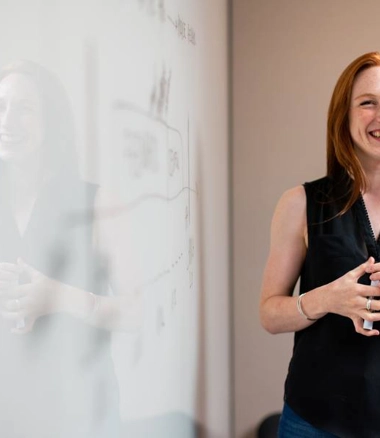
We recently sat down with Colby Gallagher, Structural Engineer and Digital Engineering Manager at Kusch to discuss the Digital Engineering sector, and how the future of the AEC industry may look with continued digital advancements. Colby was also able to provide some fantastic advice to younger engineers and graduates, on how they can upskill and become 'digitally ready' entering the market.
As always, we'd love to hear from you if you have any questions on this article, and be sure to give Colby a follow on LinkedIn - he shares some great content!
CR: First, Colby, tell us a bit about yourself and your current role? How and why did you make the transition from straight structural engineering, to digital engineering?
CG: I graduated from The University of Newcastle with a double degree in Civil Engineering and Business. I’m currently working at KUSCH Consulting Engineers as a Structural Engineer and Digital Engineering Manager. The reason why I transitioned from a purely structural engineering role basically comes down to my love of all things tech. While at University I started doing some coding and app development in Unity in my spare time, and I’ve continued that learning with some web development and Python courses. Outside of a bit of Matlab and VBA, we really didn’t do any coding at University which frustrated me, because I saw it as a critical skill for an engineer, but we were never taught beyond the most basic concepts.
Prior to studying engineering I was a structural draftsman, which meant I was working in AutoCAD and Revit all week. This experience has actually been more valuable than I first realized. So much our work in construction at the moment revolves around the management of 3D models, whether that’s clash detection, integrating new builds into existing, or just being able to model in 3D. It’s a very handy skill to have as an engineer.
CR: What is digital engineering? How would you define it?
CG: To me digital engineering is just the way we should be doing design, construction and asset management. It’s all about using ALL the tools at our disposal, not just the ones that we have been using for the past century. It’s about challenging the way things have been done and finding a better way to design/build/manage.
So much of construction is focused on, “well we’ve been doing this for the past 50 years and had no issues, so let’s not change it”. This attitude is one of the reasons why we have seen such dismal productivity gains compared to every other industry (there are many other reasons why, which I could write an entire article on). However, this attitude means there is a huge opportunity for firms willing to branch out.
Digital engineering is a way of working. It’s about having the knowledge of working in 3D, while having the ability to manipulate those models and the data embedded within them to benefit the entire process. For example, at KUSCH we design seismic bracing and one of the very simple things we have been doing on our projects recently is to model all our braces in 3D. This may seem like a minor change but it means that we can pick up a clash in the model and fix it within 2 minutes. When there is a clash on site, the installer would have to contact their project manager, the project manager would then have to contact the designer, the designer would then have to request photos, the project manager would ask the installer for photos, the installer sends the photos back, and finally a resolution is found after wasting an hour of everyone’s time. On a large job, with hundreds or thousands of these situations, it really starts to add up.
CR: How would you classify the difference between digital and BIM?
CG: BIM stands for Building Information Modelling. It is about producing a high quality 3D model with accurate, reliable and verifiable data within that model that can be used for costing, timeline, clash detection, asset management, ordering, visualisation, etc.
In my opinion BIM is just one part of digital engineering. We can expand upon the benefits of BIM by using tools such as parametric design to improve the way we design. An architect might use parametric design to create an organic shape, while a structural engineer can use it to optimize a design by analysing thousands of design combinations.
Digital engineering includes cases such as creating software within a company for organizing all of a company’s geotechnical reports into an easily searchable, graphical database. Steve Richardson did this exact thing.
Or maybe a project needs to create a web based dashboard that the public can use to see progress on how a project is going. In the past, an idea like this would be thrown in the too hard basket because you would need to engage a software developer. We now have engineers that can build this in our firms internally.
I also feel like BIM has a bit of a stigma within the industry that only draftspeople do BIM and that engineers don’t have anything to do with it. This isn’t (or should not) be the case.
CR: What are the benefits of ‘digital engineering’?
CG: It’s easier to move a digital object than a physical one. What I mean by this is that we can solve so many problems just by planning better and pushing hard for as much detail as early as possible in the project. We can remove so many clashes and site issues just simply by modelling everything.
An example of this would be that by engaging the contractor and designers early on, the entire construction process can be considered during the design phase, and design decisions can be based upon construction constraints. The decision to go with prefabrication can be made at this early stage rather than trying to modify the design later to suit prefabrication.
We now have the ability to truly optimize our designs. Design in the past used to rely a lot on feel, and guessing a beam size, checking it, then changing again. This works, but is very time consuming. It also doesn’t suit making major design changes to see their impact. With new tools, anything we can parametrize, we can optimize. This is simpler than it actually is, and not everything is worth the time of trying to parametrize it.
CR: How do you see the way that projects are delivered changing over the next 5 years, due to the increased use of DE principles?
CG: I actually don’t believe we will see much considerable change over the next five years. Construction is historically a very slow moving industry and one that is slow to implement innovations on an industry wide scale. I think we are making major improvements in the way we manage project data through common data environments such as Aconex or BIM360 and I believe this will continue.
I am seeing 3D modelling become common place and I hope to see every project be modelled in 3D in 5 years time. The tools are very good now, that it doesn’t take any more time to model compared to 2D drawing.
I hope things happen that I don’t currently understand or wouldn’t even consider happening. Like when the smart phone was created, nobody was thinking, “Gee I can’t wait for Uber to be developed”. It just couldn’t be seen. And now that we are starting to create so much data and have platforms in place to manage that data I’m really hoping we start to see these revolutionary changes in our industry.
CR: Which emerging technologies do you see been at the forefront of ‘digital’ design and construction over the next 5 years?
CG: There is no doubt that Revit is critical to this. Unfortunately, Autodesk hasn’t been developing this software to match its importance in the industry, but that’s a conversation for another day. I think parametric design tools such as Rhino/Grasshopper and Revit/Dynamo which become much more prevalent as they become better understood, and their use becomes more financially viable for firms. There is a cost associated with using new tools as staff need time to learn.
The last one is common data environments such as Aconex and BIM360. This aggregation and control of project data has so much potential for improving the way we manage our projects.
I think that just being able to write code is going to be critical going forward. No matter what language you pick, having an understanding will be important.
CR: Would you say it is important for those grads or younger engineers entering the market to upskill in BIM/DE principles?
CG: Yes. This should be fundamental. “Digital engineering” is going to just become “engineering” in a few years. These tools aren’t going to be considered innovative, they will be business as usual. The graduates coming through now are the ones with the opportunity to learn how to master these tools and be at the forefront of the industry. However, you absolutely need the experience of a senior engineer to make sure we are not designing in fantasy land. There are real world constraints that cannot be put into a model and engineering judgement that will always have its place. Find these senior people that support digital engineering and use them because they are absolutely invaluable.
CR: What advice would you give to these guys? How can they upskill/get themselves well positioned to enter a digital workplace and apply ‘DE’ to engineering? Any software’s they should focus on?
CG: It’s definitely not an easy thing to do since University courses generally don’t include these skills. That means that a undergraduate currently drowning under the weight of University course work, trying to hold down a part time job, trying to find graduate work, and trying to maintain some social life needs to then find some extra time to learn these things. It’s not easy. If they have the time and passion, I would encourage them to get out there and learn some of the following depending what takes their interest. I have also included links to free or very cheap learning resources. This is exactly how I learned.
1)Parametric design and 3D modelling with Rhino/Grasshopper or Revit/Dynamo.
Your University may have licenses of these software. Autodesk also gives free student licenses of Revit/Dynamo.
People to follow on YouTube:
-
Aussie BIM Guru (Gavin Crump) - https://www.youtube.com/c/AussieBIMGuru
-
Structured Parametrics - https://www.youtube.com/channel/UCqgD1Dm9u5dCoi0f5dPcXlA
-
Rhino Grasshopper - https://www.youtube.com/channel/UCjLDKM9EzNdASaNdjBhTqug
-
Balkan Architect - https://www.youtube.com/channel/UCapzEjUWyv7H4GtPQrgybTQ
-
That BIM Girl - https://www.youtube.com/channel/UC7L-NLe8FUBJAKrZi2tIWlQ
2)Python Coding – I took this course on Udemy and absolutely loved it. Definitely recommend it. Don’t pay full price for this. Udemy has sales on all the time and the course will cost you about $25.
https://www.udemy.com/course/python-the-complete-python-developer-course/
3)Unity – For augmented reality and virtual reality development. (again don’t pay full price) https://www.udemy.com/course/the-ultimate-guide-to-real-world-applications-with-unity/
4)Twinmotion – Very quick and very effective visualization software.





